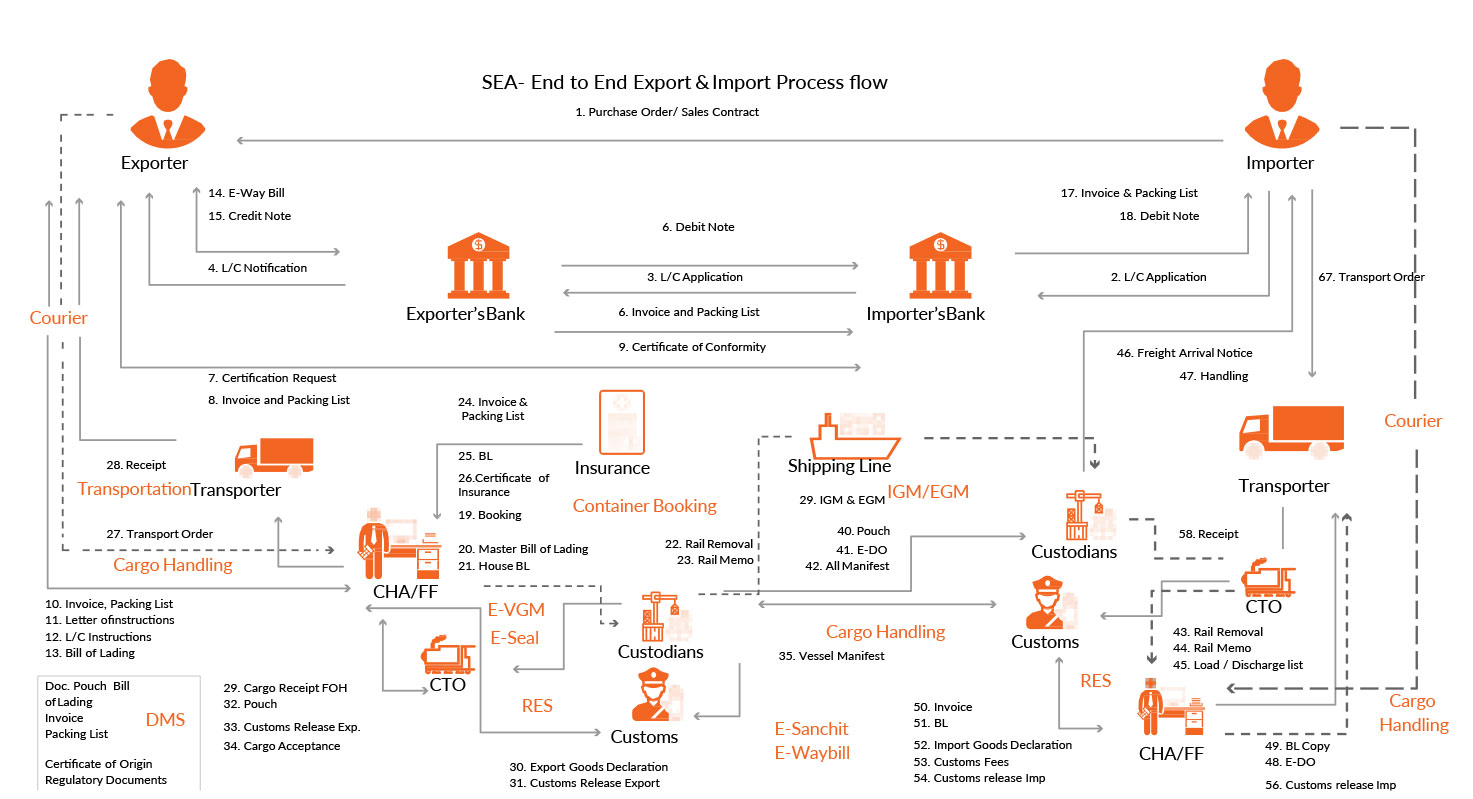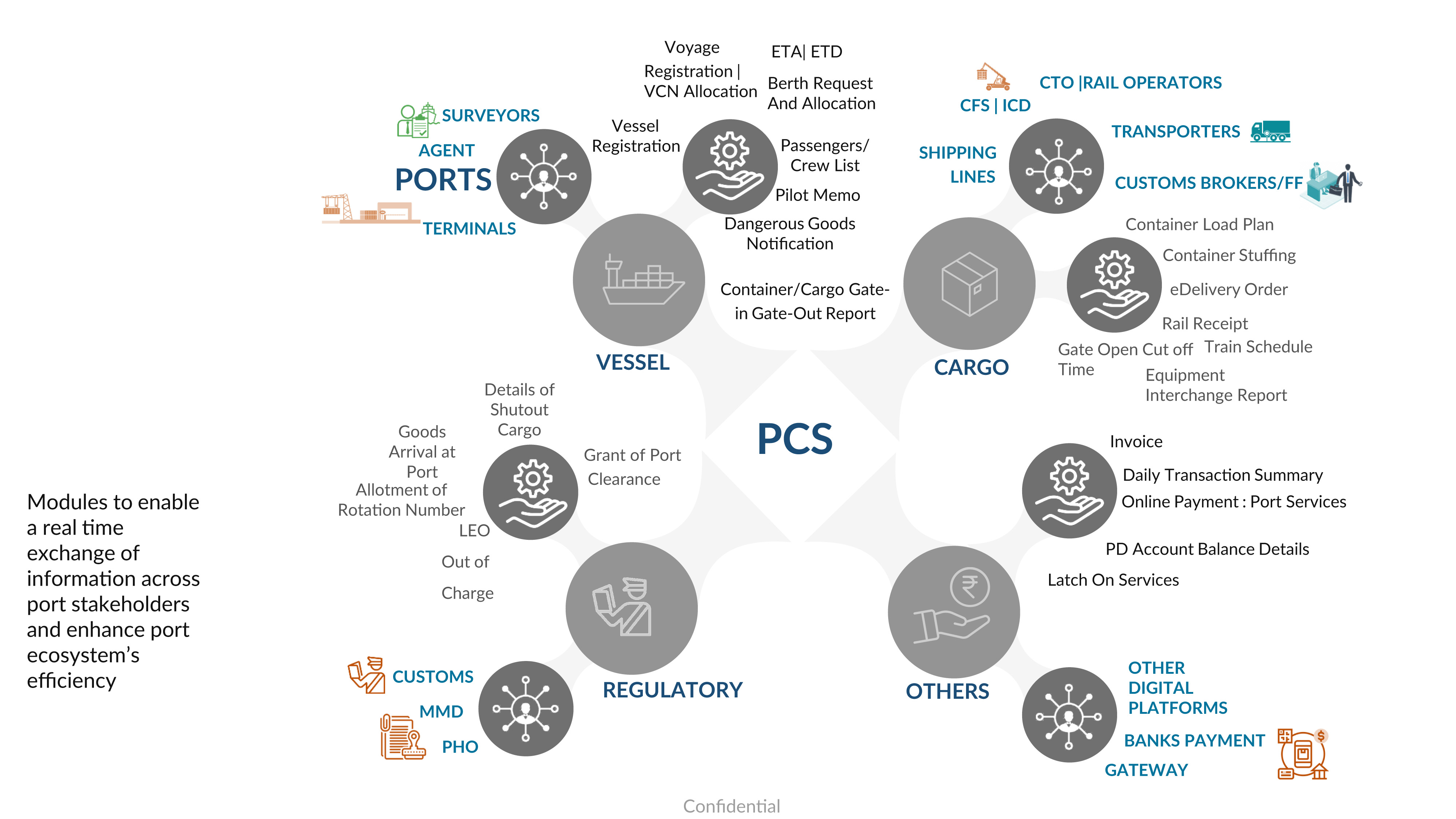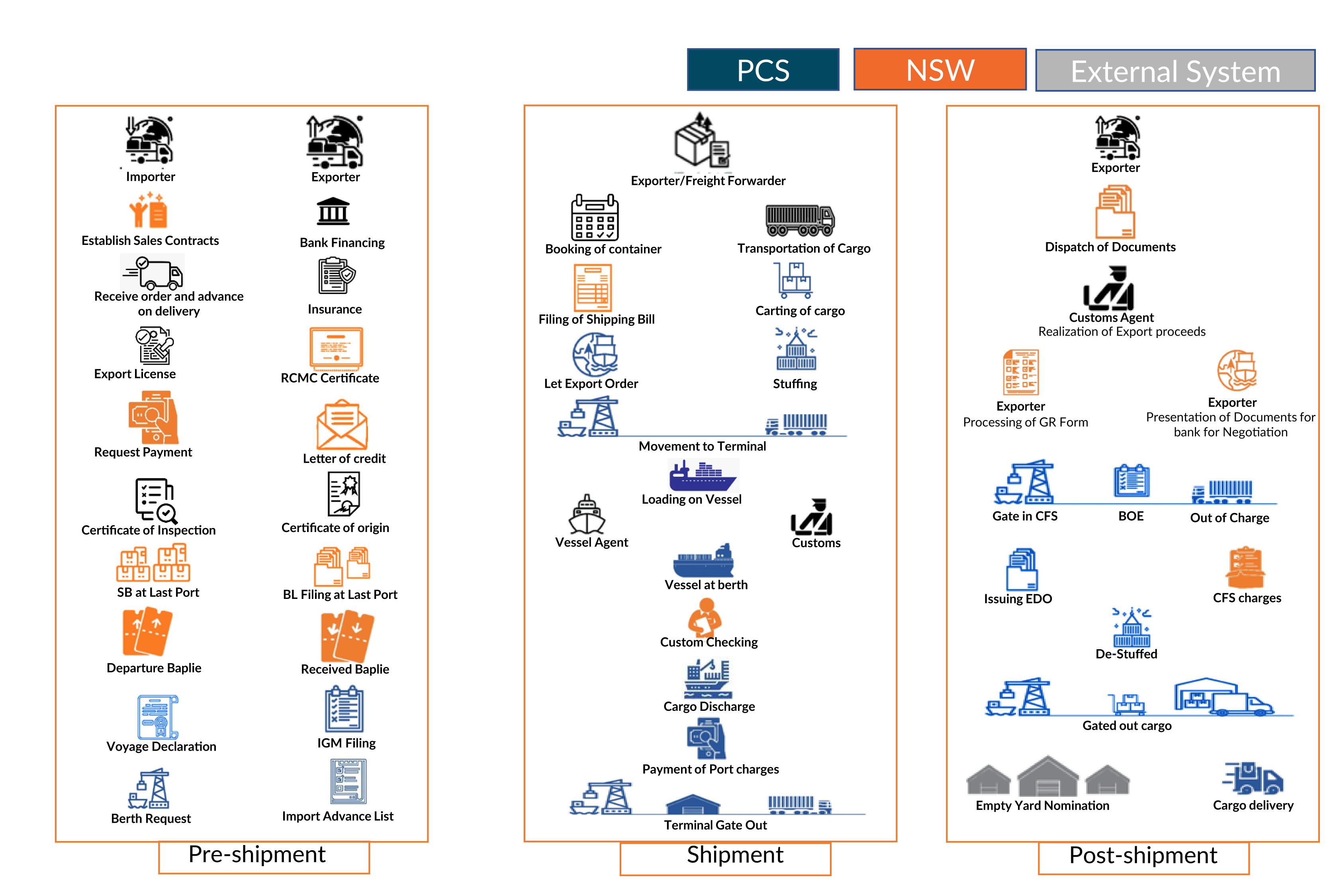The world of trade is large. Although exciting it consists of many actors that play various roles throughout the lifecycle of a shipment. As business picks up the pace and as trade blocs promote cross-border exchanges, efficiency is the order of the day and no one can afford to work in silos. Countries must adopt technology platforms, to help weave together the varied pieces of trade and logistics, to offer seamlessness of integration and transactions.
There are various trade platforms across the world, like Trade Net (Singapore) and National Single Window-DNeX (Malaysia). Some of the other countries that have trade platforms are the Republic of Korea, Hong Kong, Senegal, Thailand etc. After introducing the single trade window, the processing time of documents have reduced from 4 days to 15 minutes in Singapore, customs clearance from 18 days to 9 days in Senegal, and export time from 24 days to 14 days in Thailand. This includes savings from transmission costs by using e-documents, improved productivity by automating administrative work, and improved management, storage, and retrieval of information and documents using information technology.
In India, The Port Community System (PCS 1x) was launched on December 11, 2018, in a record time of six months. PCS 1x is an initiative by the Indian Ports Association intended to provide a single window system for port communities in India, to securely exchange documents and information electronically with their stakeholders, involved in maritime transport.
ICEGATE is the national portal of Indian customs that provides e-filing services to the trade, cargo, carriers, and other trading partners electronically. PCS1x was integrated with ICEGATE on 31st July 2020. Since then, PCS 1x has tripled its user base and reduced the turnaround time of customs.
Now PCS 1x has been migrated to the National Logistic Portal Marine (NLP-M), which is designed as an open platform, that allows multiple service providers to offer EXIM-related services independently.
NLP - Landscape

- The PCS 1x Journey
The tender for PCS was awarded to Portall by the Indian Ports Association (IPA) in May 2018. The scope was to migrate the older version, PCS 1.0 launched in 2006, as-is without any change, to a cloud platform; and thereafter to provide various value adds such as mobile applications, interactive dashboards, 24x7 support wrapped around a modern and intuitive user interface. By doing this, the user base of PCS expanded from 7 stakeholders, to 27 stakeholders of PCS 1x. A lot of marketing through roadshows and interactions were conducted, to bring more stakeholders on-board. The vision was to deliver the best PCS globally.
Port Community System

- The road to NLP-M
The NLP-M will be a step up from the PCS 1x, the existing Port Community System, and will cover the functionalities of marine trade including inland waterways and coastal. The NLP-M initiative will strengthen the involvement of various ministries through interactions with various platforms, sharing of information sources and working in close synergy.
Importer Exporter Process

- The core advantages of NLP Marine
PCS 1x, currently has 18,361 registered users and the total number of vessels handled is 1.06 Mn. The e-payments done per month are approximately US $ 6 4 Mn, and the total transaction amount since inception is approximately US $ 2,431 Mn. The average number of transactions per month is approx 1 Mn.
- Connecting land, water and air
As trade grows and becomes complex, multiple modes of transportation will be resorted to, to help bring in efficiency, reduce costs, move goods faster and more recently take into consideration the cause of environmental responsibility. Therefore, multi-modal transport - ocean, land, air and inland waters need to be synchronised.
- Ocean trade
India is placed centrally - bang in the middle of one of the world’s major sea routes connecting the Middle East, Africa and East Asia with Europe and the Americas. Routes through and around the Indian Ocean facilitate maritime trade which carry more than half of the world’s sea-borne oil. It is also a valuable source of fishing and mineral resources.
- Land trade
Land trade provides access to hinterland areas helping the trade to penetrate deeper inland markets. Roadways and railways are used for cargo and passenger movement and can often help reduce time, and trade transaction costs.
- Air trade
Air trade plays an important role in the economic development of the nation. The Ministry of Commerce and Industry is targeting an exponential jump in goods and services exports - US $ 2 Tr by 2030. India’s air cargo industry is well positioned to scale up further. Airport cargo infrastructure, digital infrastructure for cargo handling, and airport gateways that facilitate efficient access to world markets need to be strengthened.
- Inland trade
Inland trade is quickly gathering momentum, as the government’s Sagarmala programme looks to bolster the use of inland waterways and rivers, as an efficient way to move domestic trade.
Inland navigation has been considered, the cheapest means of transport compared to other methods of transport. Initial investments towards river services, as well as expenditure on its maintenance is much lesser as compared to road and rail transport. Moreover, it causes lesser pollution.
- Land ports
Petrapole Border is the largest land port located in south Bengal.
Land ports are the new frontiers for trade. The first land port in India was set up only 15 years earlier at the Wagha- Atari border. The Wagha border facilitates people movement and the Attari is exclusively for the movement of trucks and trains. As trade volumes grow, the need to diversify how we transport goods will be paramount – making land ports an integral part of the of the trade eco system. This will mean integrating land ports into the NLP.
We have currently nine integrated land ports operational in India - Attari, Agartala, Petrapole, Raxaul, Jogbani, Moreh, Sutarkandi, Srimantapur, and a Passenger Terminal Building at Dera Bada Nanak. There are some land ports that are under development - Rupaidiha, Dawki, Banbasa, Sonauli, Sabroom, Bhithamore, Kawrpuichhuah, Fulbari, Panitanki etc.
- The bottom line
The current logistic costs in India are to the tune of 14-15 percent of the GDP. In most developed economies this cost is to the tune to 9-10 percent. The high costs in India can be attributed to delays due to paperwork and process inefficiencies. NLP-M hopes to address these issues and provide an environment for ease of doing business and a digital platform with reduced paperwork. The government of India hopes to reduce the logistics costs in the country through the usage of NLP.